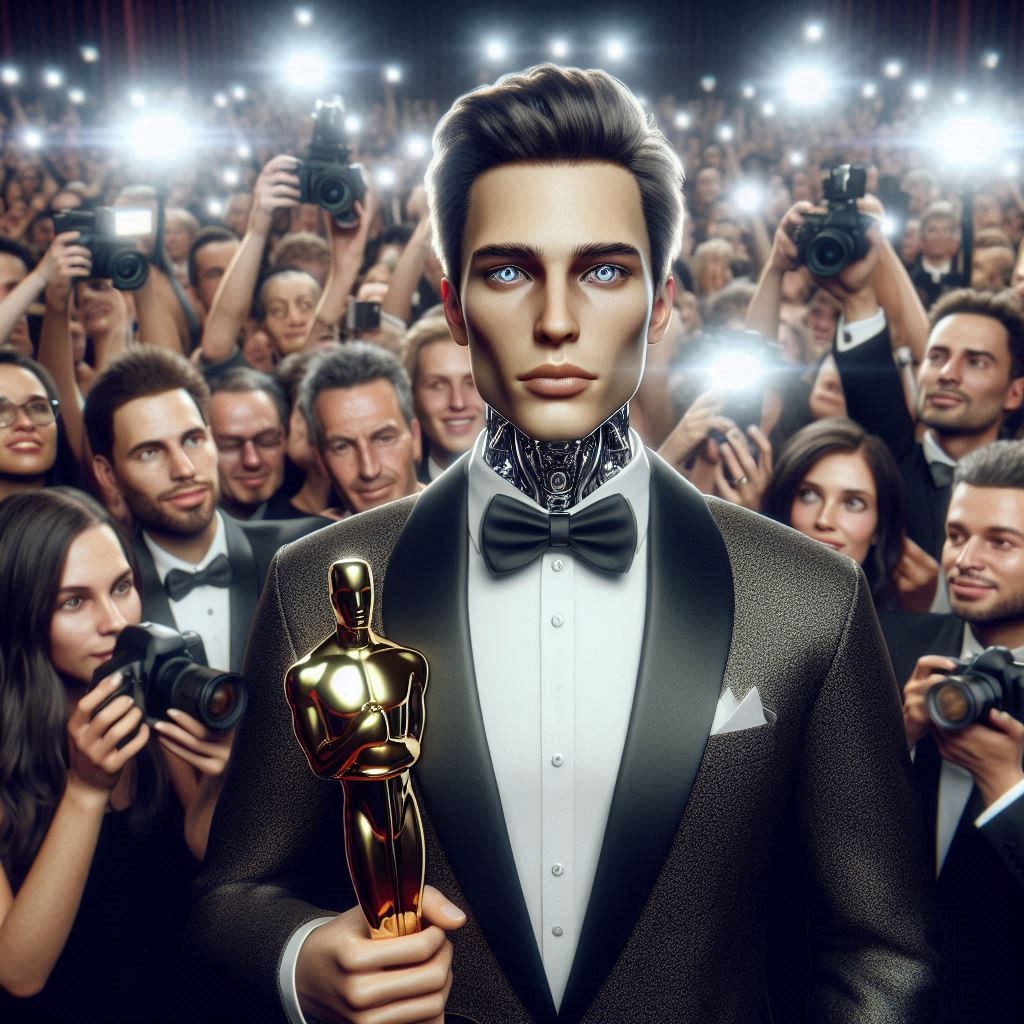
I. Introduction
Not long ago, artificial intelligence (“AI”) was a concept brought to life by human actors – whether through Scarlett Johansson’s voice in Her (2013) or as Alicia Vikander’s eerie humanoid presence in Ex Machina (2014). Today, the roles have reversed: it is AI that is creating on-screen performances that appear convincingly human.
From de-aging and re-aging to posthumous digital replicas and fully synthetic background performers, generative AI offers the entertainment industry new creative possibilities and potentially cost-saving efficiencies in (post)production. For screen and voice actors and actresses (collectively “performers”), AI can come to the rescue when illness or unforeseen circumstances prevent them from completing a project – potentially avoiding a full recasting. Yet fears about the erosion of their creative control, and ultimately their livelihoods, clearly prevail.
These concerns fueled the four-month strike by the U.S. actors’ union SAG-AFTRA in 2023, when AI became a key issue in the negotiations over the renewal of its agreement with the production companies’ association AMPTP. In December 2023, the new contract (“SAG-AFTRA Agreement”) was ratified, introducing detailed provisions governing AI in film and television production.[1] In February 2025, the German federal actors’ union BFFS and the public sector trade union ver.di reached an agreement with the producers’ alliance (Produktionsallianz) on the use of generative AI in film production (“BFFS Agreement”), effective March 1. While this agreement was reached without the high-profile strikes seen in Hollywood, it represents an equally significant milestone for the film industry.
This two-part article examines the BFFS Agreement and compares its key provisions to the SAG-AFTRA Agreement, highlighting similarities and differences in ensuring performers’ participation and control over the use of AI. One thing is clear from the outset: both agreements share the same basic approach to AI – not banning it, but using it responsibly is the future of filmmaking.
II. Statutory Protection vs. Industry Agreements
Under German ancillary copyright protection, any recording of a performance and its copyright-relevant use (e.g., reproduction, communication to the public), requires the performer’s consent and appropriate remuneration.[2] This, and the moral rights protection against gross distortions, is rooted in international copyright law and applies equally to uses involving generative AI. The German constitution embeds a general right of personality, which, together with specific law, gives performers additional control over their image and likeness.[3] Unauthorized and any defamatory use of a performer’s likeness, image, or other personality traits such as voice, style or mannerism is prohibited. If such uses are not covered in cast agreements, studios and producers may face liability for copyright infringement and violation of personality and data protection rights.
Given this strong legal protection of performers against AI-driven modifications and imitations of their performances and likeness, the BFFS Agreement functions primarily as a framework for standardized implementation. In contrast, performers in the U.S. operate in a legal landscape without a strong federal protection, which is why collective bargaining agreements are crucial to establishing adequate protections and ensuring a level playing field between performers and studios.
III. Regulated AI Use Cases
The BFFS Agreement addresses generative AI, but not all applications of the technology that might technically qualify as such fall within its scope. Similar to the SAG-AFTRA Agreement, “conventional AI technology applications” already used by film producers are excluded, such as CGI and audiovisual effects, but also the recreation and alteration of voices and images. The agreement focuses on regulating new production capabilities enabled by AI, rather than applying to all possible uses of generative AI. Four specific use cases of generative AI are recognized:
- Digital modifications: Changes and alterations of the image or performance (visual and/or acoustic) made with generative AI.
- Digital replica: AI replica of a performer’s voice or image that gives the impression that the recreation is the performer herself and is used to virtually place the performer in scenes filmed without her participation.
- Partial digital embodiments: Modifications and alterations of only parts of the image or the (visual and/or acoustic) performance made with generative AI to transfer individual body parts such as the face to other people (e.g., stunt or nude doubles) or to replace the performance with AI-generated elements (e.g., virtuoso piano-playing hands). This process creates human-human or human-AI hybrid characters.
- Artificial performers: Digital “beings” created with generative AI by mixing recordings of multiple performers into a new entity that is no longer recognizable as a particular identifiable person, but is intended to, or does, give the impression of being a natural person. The SAG-AFTRA Agreement refers to “synthetic performers” in this context.
The SAG-AFTRA Agreement covers digital alterations and digital replica, but not partial digital embodiment. This difference may be due to the strong statutory protection in Germany, which can be broken down to individual features of the performer. The SAG-AFTRA Agreement does, however, offer a limited protection of physical characteristics when it comes to synthetic performers. Even though synthetic performers are defined as ultimately not recognizable as a particular person, producers must obtain consent to use a performer’s name and key facial features (eyes, nose, ears and/or mouth) in AI prompts to generate a synthetic performer with a recognizable principal facial feature. The agreement over the use is left to the parties. This remains the only explicit reference to the input level of AI. The BFFS Agreement also mentions this only as an afterthought to the definition of digital motion capture (the capturing a performer’s facial and/or body movements to create a recording of a model for digital replica or partial digital embodiments), noting that digital data generated there “can also be fed into a generative AI process if necessary”.
IV. Compensation for AI Replacement and Consent
In general, a fee must be specifically agreed upon for the performer’s consent (see V.) to use the digital replica or digital partial embodiment. Both agreements base this on “fictitious shooting days”, the days that would have been required for the production if the performer had personally acted instead of the AI-replacement. The BFFS Agreement calls for objective criteria such as the length of such a scene with human involvement as estimated in good faith by the producer (“stopped script length”), but keeps this under review, as producers prefer a “screentime approach” based on the digital replica’s actual visibility and audibility in the final product.
Since AI replacements are to be compensated like an own performance, a separate fee need not be agreed upon if (i) the performer is already compensated for the production and the use of the digital replica or digital partial embodiment does not significantly exceed the scope of the performer’s contractually agreed-upon participation, or (ii) the AI replacement is used in a scene in which the performer appears anyway, for which the BFFS Agreement acknowledges the exceptions of double and additional roles. Work for digital motion capture or creating a digital replica counts as shooting days and must be compensated accordingly.
Remuneration for fictitious shooting days is to be based on the general film workers collective agreement, which the BFFS Agreement’s parties have also recently revised. Due to the prominent role of residuals in the Hollywood entertainment industry and their essential role in ensuring fair compensation for ongoing film exploitation, SAG-AFTRA secured that the residuals for AI-replaced performances match those for human performances.
Part 2 of this post will explore consent requirements and post-mortem AI-modified performances.
—————————————————————————————————————-
[1] Since then, SAG-AFTRA has concluded other AI-specific agreements, for example with a AI voice technology company.
[2] Sect. 73, 77, 78, 79(2a), 32 German Copyright Act (Urheberrechtsgesetz, UrhG).
[3] Art. 2(1), Art. 1(1) German Constitution (Grundgesetz); Sect. 22 Art Copyright Act (Kunsturhebergesetz, KUG).
________________________
To make sure you do not miss out on regular updates from the Kluwer Copyright Blog, please subscribe here.


